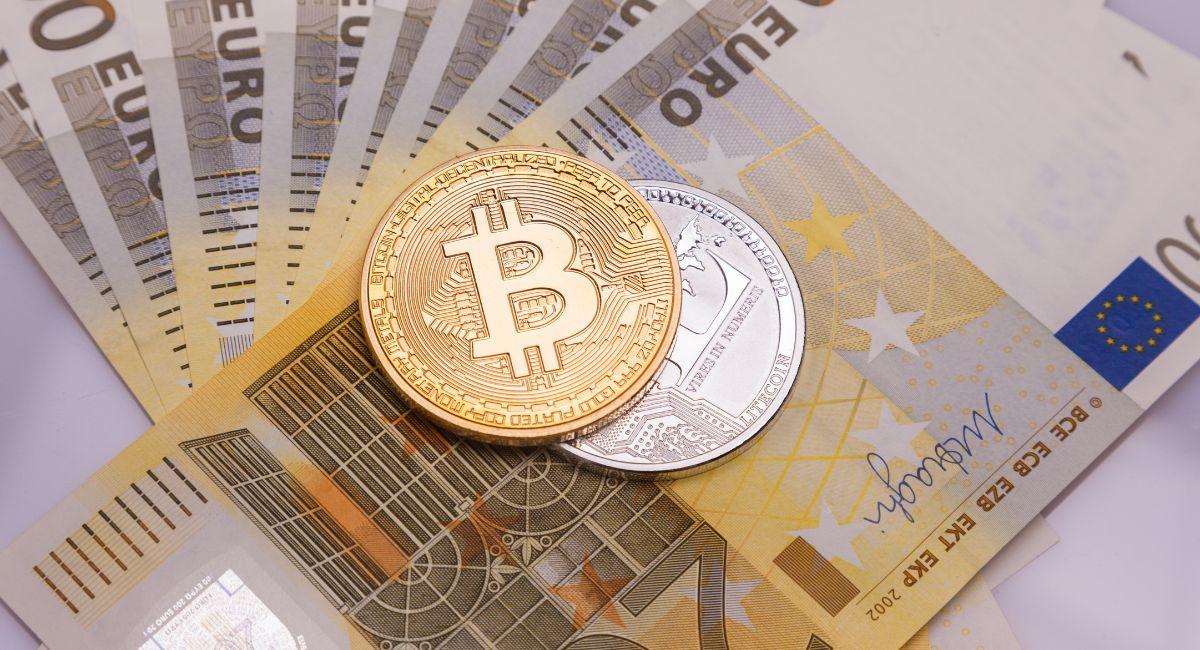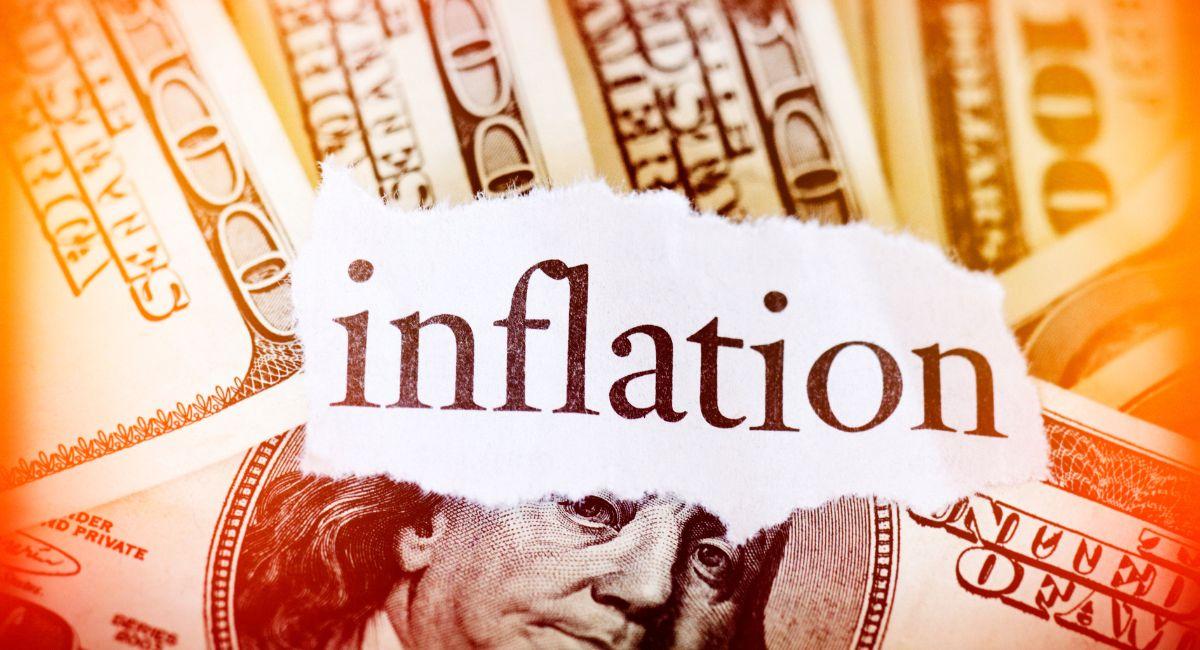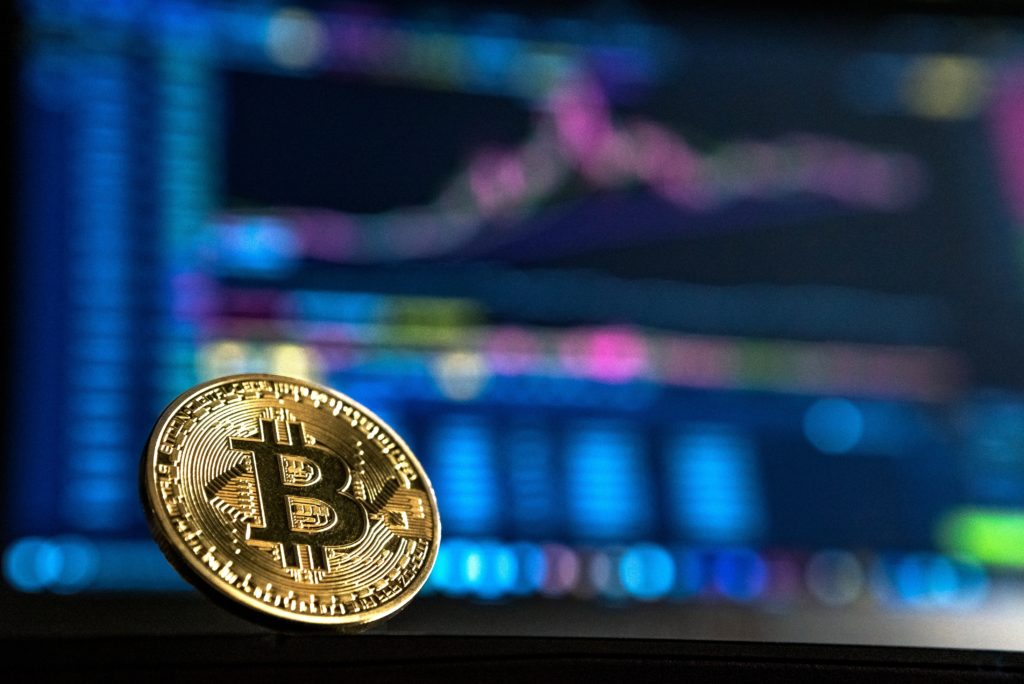In the complex world of finance, where economic forces constantly shape the trajectory of currencies and assets, the relationship between Bitcoin and inflation has become a topic of significant interest. Bitcoin, often hailed as “digital gold,” has emerged as an alternative store of value in the face of traditional financial uncertainties. In this detailed exploration, we will dissect the intricate connection between Bitcoin and inflation, examining how the cryptocurrency has positioned itself in the context of global economic challenges.
Understanding Inflation and Its Implications: Inflation, the gradual increase in the general price level of goods and services over time, erodes the purchasing power of a currency. Central banks often target a specific inflation rate to maintain economic stability, but excessive inflation can lead to diminished consumer confidence and financial instability.
Bitcoin as a Hedge Against Inflation:

Bitcoin as a hedge against inflation is a topic that has gained significant attention in recent years. To understand this concept, we need to explore the fundamental characteristics of Bitcoin and how they relate to the broader economic landscape.
Firstly, Bitcoin is often referred to as “digital gold” due to its scarcity and decentralized nature. Unlike traditional fiat currencies, which can be printed in unlimited quantities by central banks, Bitcoin has a fixed supply cap of 21 million coins. This scarcity is designed to mimic the scarcity of precious metals like gold, making it resistant to inflationary pressures.
In times of inflation, the value of fiat currencies tends to decrease as more money is injected into the economy. This can erode the purchasing power of individuals and businesses. Bitcoin, with its limited supply, is seen by some as a store of value that can potentially preserve wealth in the face of inflationary pressures.
Additionally, Bitcoin operates on a decentralized and immutable blockchain technology. This means that it is not subject to the control or manipulation of any single entity, such as a government or central bank. This decentralized nature is appealing to those who seek alternatives to traditional financial systems that may be influenced by political decisions.
However, it’s important to note that Bitcoin is a relatively volatile asset, and its value can experience significant fluctuations over short periods. While some investors view this volatility as an opportunity for potential gains, others may find it a source of risk.
In practical terms, investors and institutions have increasingly considered allocating a portion of their portfolios to Bitcoin as a hedge against inflation. This strategy is based on the belief that Bitcoin’s limited supply and decentralized nature make it a resilient asset in the face of economic uncertainties.
It’s essential to approach the idea of Bitcoin as an inflation hedge with a balanced perspective. While it has shown resilience in certain market conditions, it is not without risks. Investors should carefully assess their risk tolerance and conduct thorough research before incorporating Bitcoin into their investment strategies. The relationship between Bitcoin and inflation is complex, and its effectiveness as a hedge may vary depending on economic conditions and other factors.
Scarce Supply and Halving Events:
Bitcoin’s scarcity is a foundational aspect of its design and is tightly woven into its protocol. The cryptocurrency’s code dictates a fixed supply limit of 21 million bitcoins, drawing parallels with precious metals such as gold, which are valued for their limited availability. This scarcity is considered a crucial factor in understanding Bitcoin’s potential as a store of value and hedge against inflation.
Furthermore, the concept of halving events plays a significant role in reinforcing Bitcoin’s scarcity. Approximately every four years, the reward that miners receive for validating transactions and adding new blocks to the blockchain is halved. This process, known as “halving,” is encoded in the Bitcoin protocol to occur after every 210,000 blocks. The reduction in the reward effectively decreases the rate at which new bitcoins are created, ultimately contributing to the asset’s scarcity over time.
Halving events have historically been associated with increased interest and attention in the cryptocurrency space. The anticipation of reduced new supply often leads to discussions and speculation within the community. The notion of scarcity intensifies during these periods, as the diminishing rate of new bitcoin issuance aligns with the overall finite supply limit.
Investors and enthusiasts closely monitor halving events, anticipating their potential impact on Bitcoin’s price dynamics. Historical data suggests that previous halvings have been correlated with significant price appreciation. The logic behind this correlation lies in the basic economic principle of supply and demand – as the rate of new supply decreases, assuming demand remains constant or increases, the price tends to rise.
These events serve as a reminder of Bitcoin’s deflationary nature. While traditional fiat currencies can be subject to inflationary pressures due to factors such as central bank policies, Bitcoin’s fixed supply and halving mechanism create an environment where scarcity becomes a driving force.
It’s important to note that while halving events have coincided with notable price movements in the past, they do not guarantee future outcomes. The cryptocurrency market is influenced by various factors, including market sentiment, regulatory developments, and macroeconomic trends.
In conclusion, Bitcoin’s scarcity, encoded in its fixed supply limit and reinforced by halving events, is a critical aspect of its value proposition. These features contribute to the narrative of Bitcoin as “digital gold” and emphasize its potential as a store of value over time. However, investors should approach the market with caution, acknowledging the inherent volatility and uncertainties that come with cryptocurrency investments.
Global Economic Uncertainties and Bitcoin Adoption:

Global economic uncertainties and inflationary concerns have historically played a pivotal role in driving interest and adoption of Bitcoin. In times of economic turmoil, individuals and institutions often seek alternative assets that can provide a hedge against currency devaluation and serve as a store of value. Bitcoin, with its unique properties, has emerged as a compelling option during such periods.
- Hyperinflation and Currency Devaluation:
- In countries experiencing hyperinflation or currency devaluation, traditional fiat currencies can rapidly lose value, eroding people’s purchasing power. Bitcoin, with its fixed supply and decentralized nature, offers an alternative that is not subject to the same economic and political dynamics. This makes it an attractive option for those looking to preserve their wealth in the face of rapid currency depreciation.
- Store of Value and Safe Haven Narrative:
- Bitcoin is often referred to as “digital gold” due to its scarcity and finite supply limit. During times of economic uncertainty, this narrative gains traction, portraying Bitcoin as a store of value similar to precious metals. Investors may turn to assets perceived as safe havens, and Bitcoin, with its global recognition and borderless nature, fits this description.
- Global Recognition and Accessibility:
- Bitcoin’s decentralized nature allows it to operate independently of any specific government or financial institution. This global recognition and accessibility make it appealing to individuals in countries with unstable financial systems, providing them with a means to store and transfer value without reliance on traditional banking infrastructure.
- Diversification of Portfolios:
- Institutional investors and hedge funds, looking to diversify their portfolios and mitigate risks associated with traditional assets, may allocate a portion to Bitcoin. The cryptocurrency’s low correlation with traditional markets makes it an attractive addition for risk management purposes.
- Technological Advancements and Financial Inclusion:
- The advancement of technology, particularly in the form of smartphones and the internet, has facilitated greater access to Bitcoin. This has empowered individuals in regions with limited financial infrastructure to participate in a global digital economy, providing them with an alternative means of financial inclusion.
- Speculation and Investment Opportunities:
- Economic uncertainties can create an environment where investors seek alternative opportunities for returns. Bitcoin’s potential for price appreciation, coupled with its decentralized and borderless nature, attracts speculative interest during uncertain economic times.
While Bitcoin has demonstrated its resilience and attractiveness during periods of economic uncertainty, it’s essential to acknowledge the volatility inherent in the cryptocurrency market. Investors should carefully assess their risk tolerance and conduct thorough research before considering Bitcoin as part of their investment strategy. Additionally, regulatory developments and broader market trends can influence the adoption and perception of Bitcoin on a global scale.
Bitcoin vs. Traditional Stores of Value:

Comparing Bitcoin to traditional stores of value, particularly gold, highlights the cryptocurrency’s unique features that position it as a modern alternative in the evolving landscape of financial assets.
- Borderless Nature:
- Bitcoin operates on a decentralized network that transcends geographical boundaries. This borderless nature allows individuals to transact and store value globally without being restricted by traditional financial systems. In contrast, gold, while universally recognized, requires physical transportation and storage, making it less convenient in a digital and interconnected world.
- Ease of Transferability:
- Bitcoin’s digital nature makes it highly divisible and easily transferable. Transactions can occur seamlessly, irrespective of the amount being transferred. In contrast, moving large quantities of physical gold can be cumbersome and costly, involving security measures and transportation logistics.
- Accessibility:
- Bitcoin is accessible to anyone with an internet connection, providing financial inclusion to individuals in regions with limited banking infrastructure. This accessibility contrasts with gold, which may be less attainable for those in remote areas or regions with restricted access to financial services.
- Finite Supply and Scarcity:
- Both Bitcoin and gold derive value from their scarcity. Bitcoin’s protocol limits its total supply to 21 million coins, creating a deflationary environment. Gold, while not infinitely abundant, is still subject to mining activities. Bitcoin’s fixed supply and predictable issuance through halving events enhance its scarcity, potentially making it a more reliable store of value.
- Divisibility:
- Bitcoin is divisible into smaller units, allowing for microtransactions. This divisibility is a practical feature in the digital age. Gold, on the other hand, is typically traded in larger quantities, which may not be suitable for everyday transactions.
- Storage and Security:
- Bitcoin can be securely stored in digital wallets, offering a level of security against physical risks such as theft or loss. Gold, being a physical asset, requires secure storage facilities like vaults, adding costs and logistical challenges.
- 24/7 Accessibility:
- Bitcoin markets operate 24/7, providing continuous access to the asset for trading or transactions. Traditional markets for gold may have specific operating hours, limiting accessibility during certain periods.
- Volatility and Speculation:
- While both Bitcoin and gold can be subject to market fluctuations, the cryptocurrency market is often characterized by higher volatility. This volatility can present opportunities for speculative gains but also poses risks for investors.
In conclusion, Bitcoin’s borderless and easily transferable nature, combined with its scarcity and accessibility, positions it as a modern alternative to traditional stores of value like gold. However, it’s crucial to recognize that each asset has its own set of characteristics, and factors such as risk tolerance, investment goals, and market dynamics should be carefully considered when choosing between them.
Volatility and Risk Considerations:

Certainly, the volatility of Bitcoin is a critical aspect that investors need to consider when evaluating it as an investment or a potential hedge against inflation. Here are some key points regarding the volatility and associated risks of Bitcoin:
- Price Fluctuations:
- Bitcoin is known for its significant and sometimes rapid price fluctuations. The cryptocurrency market can experience large price swings over short periods, influenced by factors such as market sentiment, regulatory developments, macroeconomic trends, and technological advancements.
- Risk Tolerance:
- Investors should assess their risk tolerance before including Bitcoin in their portfolios. The high volatility may be appealing to some seeking potential for substantial returns but can be a source of stress and financial loss for those with a low risk tolerance. Understanding personal risk tolerance is crucial in navigating the cryptocurrency market.
- Market Sentiment:
- Bitcoin’s price movements are often driven by market sentiment and speculative trading. News events, social media trends, and the overall mood in the cryptocurrency community can influence the market. This makes Bitcoin susceptible to sudden and unpredictable changes in value.
- Long-Term vs. Short-Term Perspective:
- Investors should consider their investment horizon when dealing with Bitcoin. While the cryptocurrency has shown the potential for long-term gains, short-term price fluctuations can be intense. A long-term perspective may help mitigate the impact of short-term volatility.
- Diversification:
- Diversification is a fundamental risk management strategy. Including Bitcoin in a diversified portfolio can help spread risk across different asset classes. However, it’s essential to balance potential benefits with the risks associated with the cryptocurrency’s volatility.
- Regulatory Risks:
- Regulatory developments can significantly impact the value and adoption of Bitcoin. Changes in government policies or regulations may create uncertainty and influence market dynamics. Investors should stay informed about regulatory developments in the jurisdictions where they operate.
- Technological Risks:
- Bitcoin’s value is tied to its underlying technology. While the blockchain has proven to be resilient, technological vulnerabilities, security breaches, or protocol upgrades can impact the cryptocurrency. Investors should stay informed about technological developments and risks in the cryptocurrency space.
- Liquidity Risks:
- Bitcoin markets may face liquidity risks, especially during periods of extreme volatility. This can impact the ability to execute trades at desired prices. Investors should be mindful of the liquidity conditions of the exchanges they use.
In conclusion, while Bitcoin may present opportunities as a hedge against inflation, its inherent volatility introduces risks that investors must carefully consider. Conducting thorough research, understanding personal risk tolerance, and adopting a diversified approach can contribute to a more informed and balanced investment strategy in the context of Bitcoin’s market dynamics.
Conclusion:
The link between Bitcoin and inflation is multifaceted, rooted in the cryptocurrency’s scarcity, decentralization, and perceived store of value characteristics. As the global financial landscape continues to evolve, Bitcoin’s role as a potential hedge against inflation becomes increasingly prominent. Understanding this relationship is crucial for investors seeking to navigate the complexities of a changing economic environment.
Stay informed with daily updates from Blockchain Magazine on Google News. Click here to follow us and mark as favorite: [Blockchain Magazine on Google News].

 Bitcoin
Bitcoin  Ethereum
Ethereum  XRP
XRP  Tether
Tether  Solana
Solana  Dogecoin
Dogecoin  USDC
USDC  Cardano
Cardano  Lido Staked Ether
Lido Staked Ether  TRON
TRON  Chainlink
Chainlink  Avalanche
Avalanche  Wrapped stETH
Wrapped stETH  Wrapped Bitcoin
Wrapped Bitcoin  Stellar
Stellar  Sui
Sui  Hedera
Hedera  Toncoin
Toncoin  Shiba Inu
Shiba Inu  WETH
WETH  Polkadot
Polkadot  LEO Token
LEO Token  Litecoin
Litecoin  Bitget Token
Bitget Token  Bitcoin Cash
Bitcoin Cash  Hyperliquid
Hyperliquid  Uniswap
Uniswap  Wrapped eETH
Wrapped eETH  USDS
USDS  Pepe
Pepe  Official Trump
Official Trump  NEAR Protocol
NEAR Protocol  Ethena USDe
Ethena USDe  Aave
Aave  Aptos
Aptos  Ondo
Ondo  Internet Computer
Internet Computer  Ethereum Classic
Ethereum Classic  WhiteBIT Coin
WhiteBIT Coin  Monero
Monero  Mantle
Mantle  Cronos
Cronos  Jupiter
Jupiter  POL (ex-MATIC)
POL (ex-MATIC)  Render
Render  Dai
Dai  MANTRA
MANTRA  Layer One X
Layer One X 









